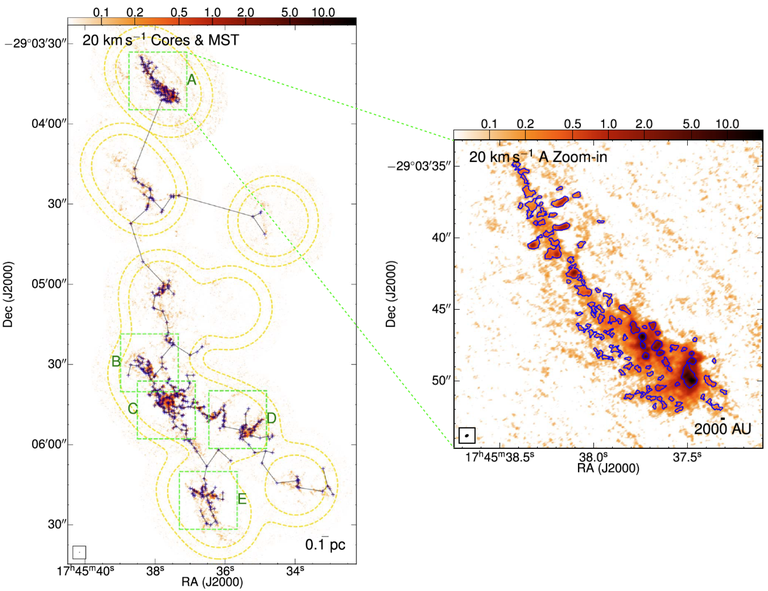Science Highlight: ALMA Finds Signatures of Jeans Fragmentation in Massive Clouds around the Galactic Center
|
Figure 1. Left: The 1.3 mm continuum emission captured by ALMA, which traces cold dust in the 20 km/s cloud. Blue crosses show peak positions of the identified substructures, and black segments show the minimum spanning trees that connect the substructures. Right: A zoomed-in view of clustered substructures in Region A. |
Jeans instability and Jeans fragmentation are fundamental concepts in astrophysics to describe the gravitationally collapse and hierarchical fragmentation of molecular clouds supported by internal thermal motions. Jeans fragmentation has been used to depict the formation of substructures such as dense cores in nearby molecular clouds, including Orion and Taurus. Whether it can be applied to more violent environments, such as the highly turbulent interstellar medium around our Galactic Center, is unclear. A recent paper by Xing Lu and collaborators finds signatures of Jeans fragmentation in three massive molecular clouds in the so-called Central Molecular Zone, a region within ~200 pc around the Galactic Center. The clouds show strong turbulence and cannot be explained by Jeans fragmentation in previous observations with 0.2 pc resolutions. Thanks to the high angular resolution and sensitivity of ALMA, the authors resolve the dense gas in these clouds traced by the 1.3 mm continuum emission to a scale of 0.01 pc, and they find that the spatial separations and masses of the substructures detected at this scale can be explained by Jeans fragmentation. Assuming the substructures will continue to accumulate gas and ultimately form stars, massive stellar clusters could be born in these clouds. The results indicate that the highly turbulent environment in molecular clouds around the Galactic Center do not affect star formation at small spatial scales (i.e., <0.1 pc).
|

